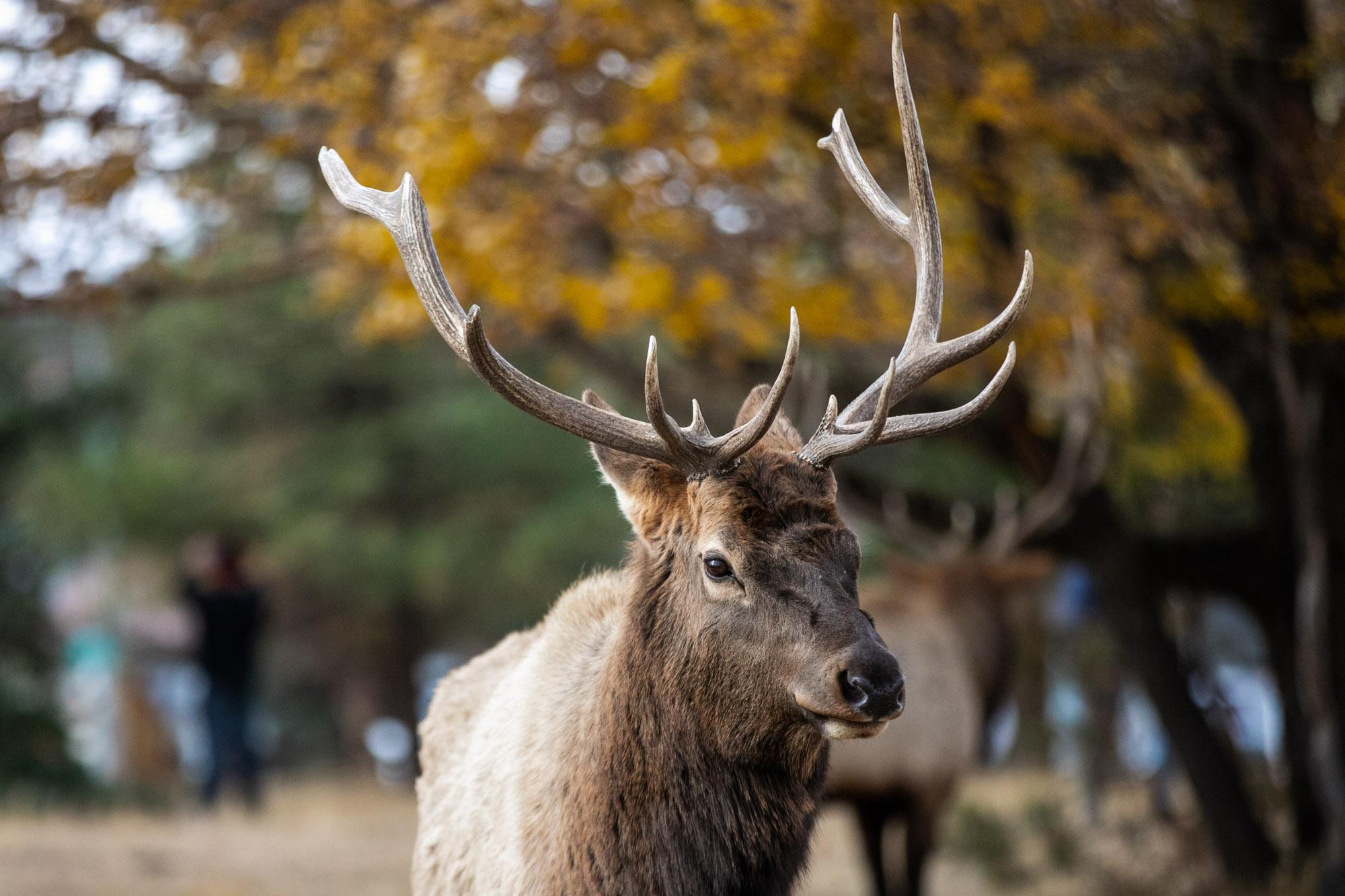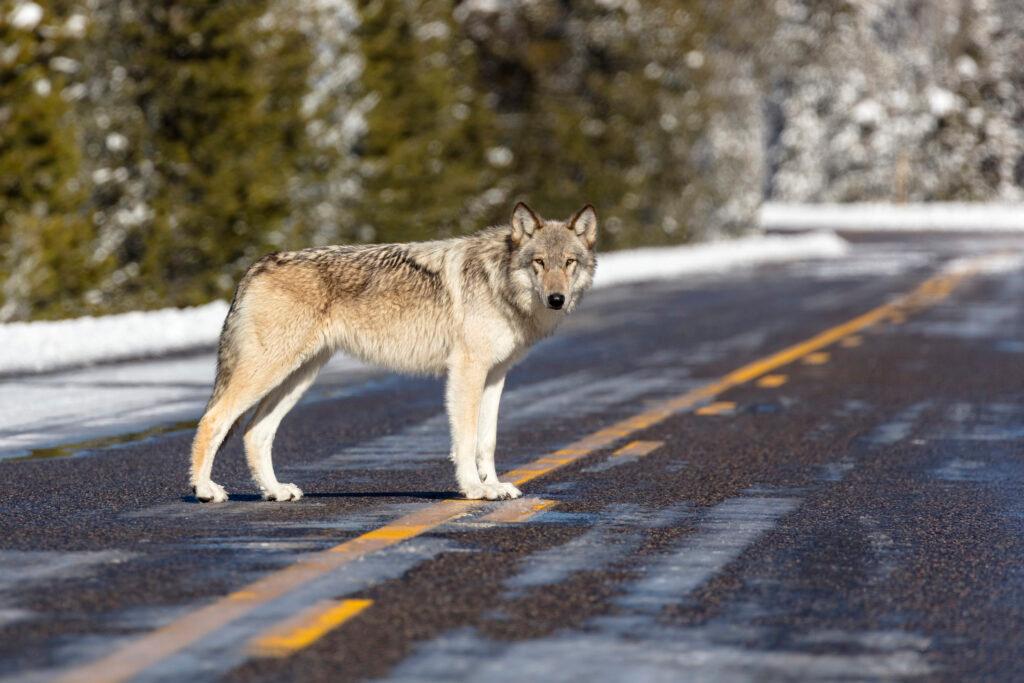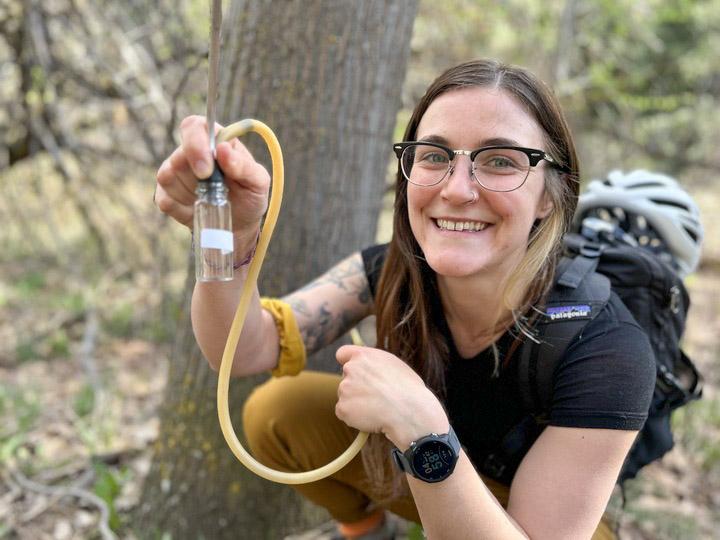
News of the worst winter for northwest Colorado big game animals in decades made Robert Fisher curious: How are wolves going to factor into all this?
Historic snowpacks made worse by persistent winds resulted in a massive die-off for deer, elk and pronghorn antelope — particularly among herds in the Rio Blanco and Moffat County region.
That led Colorado Parks and Wildlife to make dramatic cuts to the number of big game hunting licenses issued in the area. Some licenses were cut down to the minimum allowable — just 10 per hunt code.
After hearing about the decimated herds, Fisher reached out through CPR’s Colorado Wonders project to ask about how the reintroduction of wolves might affect big game animals, particularly in bad winter years.
“I was just very curious, how would the planning for the release of wolves, especially in that part of Colorado, be influenced by the die off of elk and deer unexpectedly?” Fisher asked.
It’s not the only question that Colorado Parks and Wildlife has fielded about the voter-mandated wolf reintroduction. With wolves expected to appear in the state by year’s end, there are still a lot more questions than answers on how it will all go.
The wolves that will be arriving in Colorado are to be released roughly along the Interstate 70 corridor between Glenwood Springs and Vail, where herds fared better than those in the northwest corner of the state.
A pack has also migrated over naturally from Wyoming, taking up residence in Jackson County.
Data, data and more data
Andy Holland, the big game manager for Colorado Parks and Wildlife, said there’s no baseline for what to expect from the interplay between wolves and Colorado’s elk and deer herds.
So, CPW is working to build one.
“New this year — to get pre-wolf data is the reason we launched it this year — we have three brand new elk monitoring areas, and in all of these places we're looking at survival of both adults and juveniles as well as distribution and movement of animals from the satellite collars and then cause of mortality,” Holland said. “And so all those things, since we're getting pre-wolf data, all those things will allow us to compare how things have changed or not once we have wolves established.”
That information will be cataloged and, overtime, compared to future data after wolves have been introduced to the state.
Because of the increased focus on elk herds, CPW will likely have more information on Colorado’s big game animals than previously. That will include things like where they travel to, their survival rate and more.
The new analysis will focus particularly on elk, “because they're the preferred prey for wolves,” Holland said.

What other states are doing
Colorado is not the first state to bring wolves back into the mix after nearly a century without them. Introductions have happened in northern Rocky Mountain states, including in Yellowstone National Park.
But, Holland says, Colorado wildlife managers aren’t expecting to draw too many conclusions based on what’s occurred elsewhere.
“There's so much difference in population productivity between Colorado and more northern states, and quite honestly, there's a lot of differences in people's attitudes towards wildlife management that, I think, makes predictions pretty difficult on how this is all gonna play out,” Holland said.
But that doesn’t mean there’s nothing to be learned from past experiences. Holland said it seems wolves tend to prefer elk to mule deer, and they’ve seen some trends in how elk respond to a new predator on the block.
“The other thing that we've learned that seems pretty universal from other states is that elk will change their behavior and distribution to avoid predation by wolves,” Holland said. “And one of the principal ways that it seems like they do that in other states is to increase the use of refuge areas. By that I mean places near towns where there's people, so they're essentially avoiding predation by staying closer to people. If you're just driving around, you might see a lot of elk and think there's still a lot of elk, but really the elk have changed their distribution. They're now closer to town instead of being up in the wilderness, for example.”
Holland said other states have learned things about their wildlife populations they didn’t know before the introduction of wolves. He expects Colorado will see similar revelations with more data collection and scrutiny on the interplay of animals.
“Another thing that states have seen as they've focused on wolf predation, it's brought mountain lion predation rates on elk into more focus and many other states have looked at this and found that their mountain lion predation rates are higher than I think many of us thought,” he said. “There's always surprises anytime, and that's why predictions are pretty difficult.”
Hunting licenses and habitat protection are CPW's best management strategies
While the exact impacts on elk herds from wolves is to be determined, the management and conservation strategies have been around for a long time.
The easiest tool at CPW’s disposal is hunting licenses, Holland said. Just like they did this year in the areas around Craig and Rangely, CPW can cut hunting licenses if a herd is seeing too much die-off.
Conversely, they can always make more tags available if a herd is overpopulated.
“We account for any additional mortality, whether it be from winter or predation, by reducing female quotas,” Holland said. “There's a 19-year trend of reducing those cow elk licenses to maintain those elk populations at stable to increasing (rate). It's very nuanced, the elk are doing well, they're stable-to-increasing (but) at the expense of a lot of cow hunting opportunities.”
The other management strategy to ensure a healthy elk population is one that Holland said works for all of Colorado’s critters — habitat protection. The more open land, and the better condition it’s in, the healthier the elk herds will be. This will help not only the animals that might be preyed on by wolves, but those that face difficult winters or lengthy droughts.
“Regardless of how you're looking at this situation, I think we can all agree on the fact that we need to protect habitat for big game animals and other species,” Holland said. “And the more habitat we have and the better quality that habitat is, the better our big game animals will be able to handle either predation or severe winters like we just had.”









